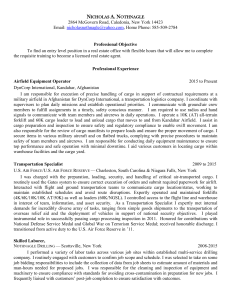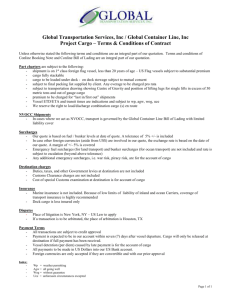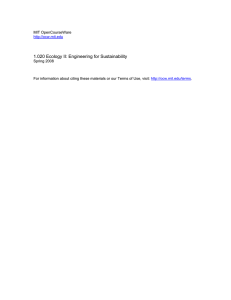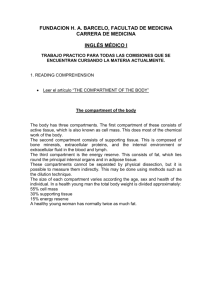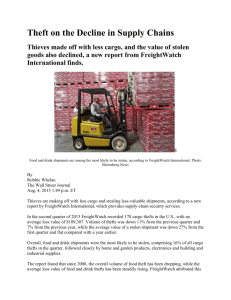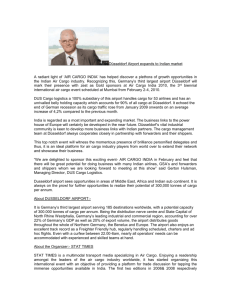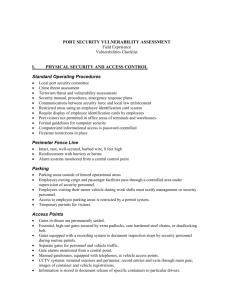503_HW8_F06
advertisement
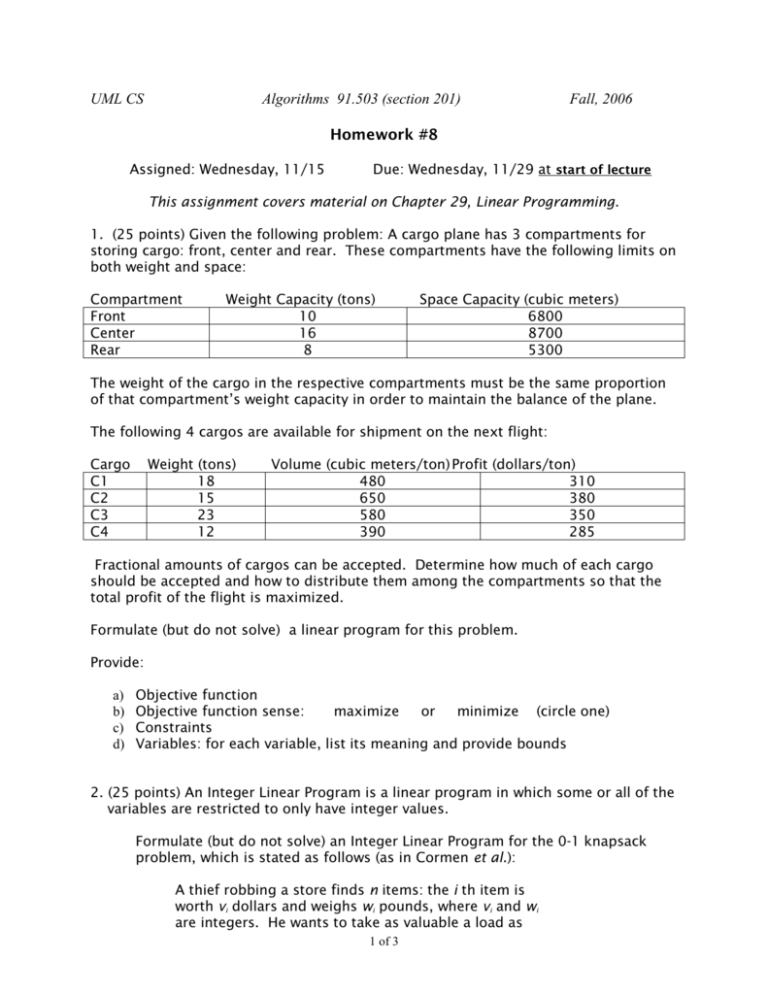
UML CS Algorithms 91.503 (section 201) Fall, 2006 Homework #8 Assigned: Wednesday, 11/15 Due: Wednesday, 11/29 at start of lecture This assignment covers material on Chapter 29, Linear Programming. 1. (25 points) Given the following problem: A cargo plane has 3 compartments for storing cargo: front, center and rear. These compartments have the following limits on both weight and space: Compartment Front Center Rear Weight Capacity (tons) 10 16 8 Space Capacity (cubic meters) 6800 8700 5300 The weight of the cargo in the respective compartments must be the same proportion of that compartment’s weight capacity in order to maintain the balance of the plane. The following 4 cargos are available for shipment on the next flight: Cargo C1 C2 C3 C4 Weight (tons) 18 15 23 12 Volume (cubic meters/ton) Profit (dollars/ton) 480 310 650 380 580 350 390 285 Fractional amounts of cargos can be accepted. Determine how much of each cargo should be accepted and how to distribute them among the compartments so that the total profit of the flight is maximized. Formulate (but do not solve) a linear program for this problem. Provide: a) b) c) d) Objective function Objective function sense: maximize or minimize (circle one) Constraints Variables: for each variable, list its meaning and provide bounds 2. (25 points) An Integer Linear Program is a linear program in which some or all of the variables are restricted to only have integer values. Formulate (but do not solve) an Integer Linear Program for the 0-1 knapsack problem, which is stated as follows (as in Cormen et al.): A thief robbing a store finds n items: the i th item is worth vi dollars and weighs wi pounds, where vi and wi are integers. He wants to take as valuable a load as 1 of 3 UML CS Algorithms 91.503 (section 201) Fall, 2006 possible, but he can carry at most W pounds in his knapsack for some integer W. Which items should he take? Provide: a) b) c) d) Objective function Objective function sense: maximize or minimize (circle one) Constraints Variables: for each variable, list its meaning and provide bounds 3. (50 points) Consider the following linear programming model: Maximize Subject to y y x3 y x 15 y x / 5 3 a) Put the formulation into standard form. b) Convert your answer to (a) into slack form. c) Form the dual of your answer to (b). d) Circle i. ii. iii. iv. TRUE or FALSE for each statement below & briefly justify your choice. The feasible region is bounded. TRUE FALSE The feasible region is empty. TRUE FALSE The feasible region is convex. TRUE FALSE The objective function’s optimal value is bounded. TRUE FALSE e) Solve your linear program graphically (see attached grid). What is the optimal value of your objective function? What are the values of your variables for this optimal value? f) Solve your linear program using SIMPLEX. What is the optimal value of your objective function? What are the values of your variables for this optimal value? Show the linear program resulting from each iteration of SIMPLEX. 2 of 3 UML CS Algorithms 91.503 (section 201) 3 of 3 Fall, 2006




